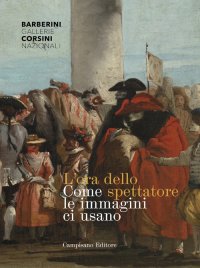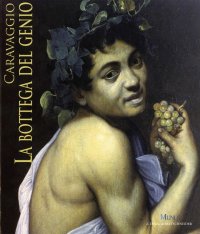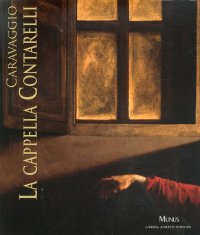L'ora dello spettatore. Come le immagini ci usano.
Edited by M. Di Monte and Gennari Santori F.
Roma, 2020; paperback, pp. 264, col. ill., cm 21x27.
cover price: € n.d.
|
Books included in the offer:
L'ora dello spettatore. Come le immagini ci usano.
Edited by M. Di Monte and Gennari Santori F.
Roma, 2020; paperback, pp. 264, col. ill., cm 21x27.
FREE (cover price: € n.d.)
Caravaggio. La Bottega del Genio
Roma, Museo Nazionale del Palazzo di Venezia - Sale Quattrocentesche, December 22, 2010 - May 29, 2011.
Edited by Falucci C.
Roma, 2010; paperback, pp. 118, b/w and col. ill., tavv., cm 24x28.
(Cataloghi Mostre. 49).
FREE (cover price: € 48.00)
Caravaggio. La Cappella Contarelli
Roma, Palazzo Venezia, March 10 - October 15, 2011.
Edited by M. Cardinali and De Ruggieri M. B.
Roma, 2011; paperback, pp. 150, 60 b/w ill., 60 col. ill., 60 b/w plates, col. plates, cm 24x28.
(Cataloghi Mostre. 50).
FREE (cover price: € 59.00)
Il liberty a Milano
Skira
Milano, spazio Oberdan, October 8 - December 8, 2003.
Edited by V. Terraroli and Bossaglia R.
Milano, 2003; bound, pp. 184, b/w and col. ill., cm 25x29.
(Arte Moderna. Cataloghi).
series: Arte Moderna. Cataloghi
ISBN: 88-8491-681-X - EAN13: 9788884916815
Subject: Design,Essays (Art or Architecture),Textiles (Tapestries, Carpets, Embroyderies),Wood (Frames, Carving, Furniture, Tarsia)
Period: 1800-1960 (XIX-XX) Modern Period,1960- Contemporary Period
Places: Milan
Extra: Art Nouveau and Liberty
Languages: 
Weight: 1.344 kg
In this work Rossana Bossaglia and Valerio Terraroli, well-known academics and specialists in the area of Italian art nouveau, known as 'Liberty', bring together a wide selection of pieces from many collections and public and private institutions, creating a panorama of the period. The authors invite the reader to visit the many architectural examples of 'liberty' in the urban fabric of Milan, the most art nouveau city in Italy, despite the destruction wrought by war.
The broad and varied selection of works, which includes painting, sculpture, graphics, glass windows, china, furniture, wrought iron work and architectural drawings, brings to life situations and landscapes telling of the extraordinary creativity in Milan in the period between the end of the 1800s and the First World War. Some of these pieces include: the universally renowned Trittico del giorno by Gaetano Previati, exhibited in 1907 at the Salon des Peintres Divisionnistes in Paris and at the VII Biennale of Venice, which was the paramount expression of the allegorical-symbolist tendency in Italy; drawings by Giovanni Segantini; a section devoted to the different approaches to sculpture in the extraordinary works of Ernesto Bazzaro, Eugenio Pellini and Leonardo Bistolfi; the colourful and elegant masterpieces of advertising in the rich graphic works of Beltrami, Hohenstein, Dudovich (present with the historic Bitter Campari campaign of 1904) and Metlicovitz; the magazines of the time and; the architectural projects, the key symbolic year being 1903 with the Palazzo Castiglioni.
In relation to furniture and the decorative arts, the book presents the wrought iron work of the Italian art nouveau master Alessandro Mazzucotelli, the delicate ceramics of the Società Ceramica Italiana of Laveno, the original jewellery designs created by the Cusi company, and the charming windows and floral decorations of the most prestigious Milan and Lombardy shops of the time.
There is a section on interiors and finely inlaid furniture created by leading Italian cabinet makers and artisans of the calibre of Eugenio Quarti, Carlo Zen, Carlo Bugatti and Ugo Ceruti, who presented their work at the International Exposition of Paris in 1900 and of Turin in 1898 and 1902











